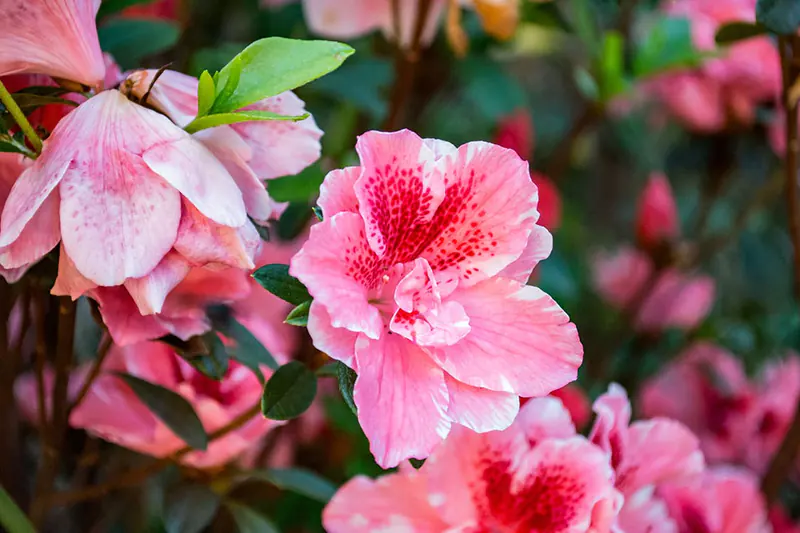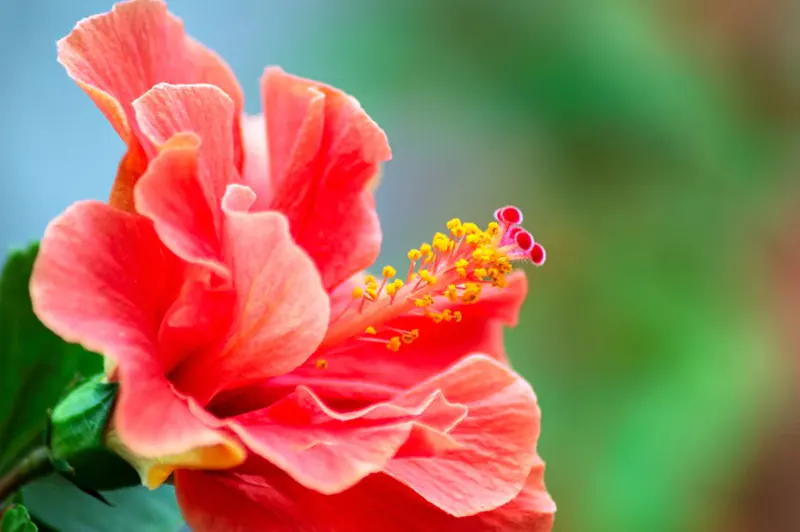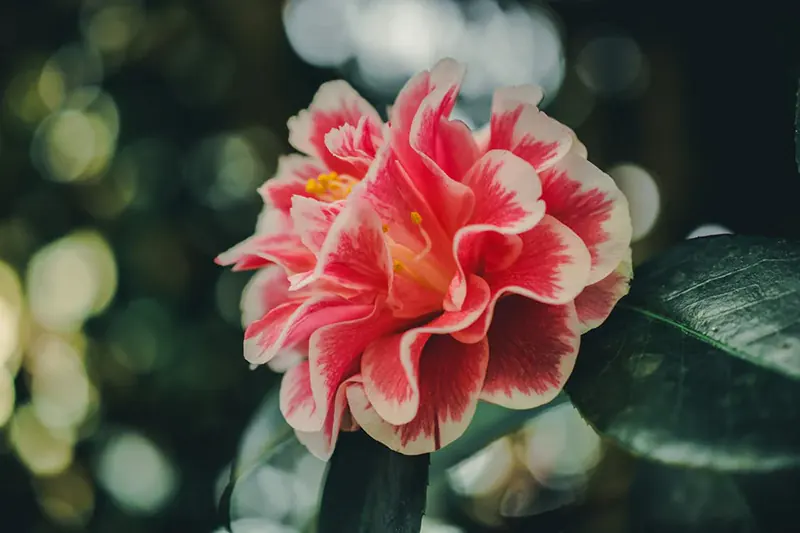What is the Ideal Hibiscus Temperature Range?
Hibiscus is one of the wonders of the tropical regions of the world. The tropics are characteristically a little more vibrant and colorful than regions that lie more to the north or south of the true tropics. Essentially, most of the regions of the world that lie between the tropic of Cancer and that of Capricorn are considered tropical regions.
These places experience higher overall temperatures than elsewhere on the globe, and often have a higher prevalence of precipitation. These regions are personified by the absolutely vibrant and beautiful colors of flowering plants like hibiscus. But what if you don’t find yourself anywhere near the tropics? How do you keep your hibiscus or hibiscus bonsai in picture-perfect condition then?
This article will explore the best temperature ranges for tropical beauties like hibiscus. If you love your hibiscus, whether it be a shrub or a bonsai, you’ll want it to thrive all year round. With that goal in mind, let’s explore temperature ranges, shall we?
 Image courtesy of Jonas Kakaroto
Image courtesy of Jonas Kakaroto
The Best Temperature Range for Hibiscus
Hibiscus needs a generally warm temperature range to thrive. This is usually around 60 – 85 degrees Fahrenheit and approximately 15 – 29 degrees Celsius. Tropical hibiscus is a little more stringent with its temperature requirements. The plant does have the word ‘tropic’ right in its name, so that does make logical sense. Unfortunately, this means that if your tropical hibiscus faces regular exposure to temperatures that exceed 85 degrees Fahrenheit or dip below 60, you’ll likely have a dead shrub or bonsai on your hands fairly soon. Tropical hibiscus doesn’t play well with unsuitable temperatures.
During the winter months, the lowest temperature your hibiscus should be exposed to is 55 degrees Fahrenheit, or 13 degrees Celsius.
It isn’t just the cold that tropical hibiscus doesn’t like. Exposing your hibiscus to temperatures above 90 degrees Fahrenheit, or 32 degrees Celsius, is likely to cause significant damage to your plant as well. If the average temperature your hibiscus experiences exceeds 90 degrees Fahrenheit, its leaves are likely to turn yellow and fall off. Strictly speaking, hibiscus can survive in temperatures up to 115 degrees Fahrenheit, or 46 degrees Celsius. However, when exposed to temperatures as high as that, your plant will definitely require deeper waterings more frequently to even out the humidity.
Hardy hibiscus is far more accommodating to fluctuations in temperature than its tropical cousin. Again, it’s right in the name. Hardy. It’s pertinent to mention, though, that hardy hibiscus often looks very different from the tropical varieties and isn’t always seen as equally magnificent or alluring. There’s a happy medium, though.
There’s one species of hardy hibiscus, H. moscheutos, also known as rose mallow, that looks strikingly similar to the tropical species you know and love. Hardy hibiscus is known to be perfectly well-suited to temperatures as low as -20 degrees Fahrenheit. Yes, you read that right, minus twenty degrees Fahrenheit. Gone are your concerns about never being able to keep a hibiscus plant because you live somewhere cold. Now, you can!
What happens if Hibiscus doesn’t experience the optimal temperatures?
As stated above, hibiscus is incredibly sensitive to temperature conditions within their environment. This means that your plant will be prone to a lot of unnecessary suffering if not kept in its ideal temperature range. For example, if the temperature you expose your tropical hibiscus to dips below 50 degrees Fahrenheit or 10 degrees Celsius, your plant will present impaired growth and flowering habits.
This is to say that your plant will not grow as it should, and at the first sign of your hibiscus flowering, the buds are likely to drop off the plant and decay into the ground. Your hibiscus may also start to lose the bulk of its leaves. What you’ll have left in the end is a struggling husk of what remains of your once brilliant, vibrant hibiscus. A dull, leafless shrub that bears no flowers and sparks no joy. No one wants that.
 Image courtesy of Ankit Bhattacharjee
Image courtesy of Ankit Bhattacharjee
How do I keep my Hibiscus warm?
We’ve already spelled out the horrifying events that may start to unfold should your hibiscus not be sufficiently warm in its home, but how do you combat something as uncontrollable as global climate? Well, I can’t speak on issues like global warming, but in terms of hibiscus health, there are a few things you can do.
The most effective way to keep your hibiscus from freezing is to bring it indoors. This is a lot easier if the plant in question is a hibiscus bonsai, but even a spot in your entryway could benefit from a larger-than-life hibiscus shrub. Massive plants indoors have been en-vogue for a number of years, adding drama and, of course, bringing the natural world into your home.
Your hibiscus doesn’t have to stay indoors the entire time. As soon as the average temperature outside is back up at least 60 degrees Fahrenheit, or 15 degrees Celsius, you can move your plant back outside again. Your hibiscus will definitely reap the many benefits of spending the summer months outdoors.
Hibiscus loves basking for hours in the warm sun. If you choose to move your plant indoors, pick a sunny spot wherever possible. Not only is sufficient access to sunlight essential for photosynthesis, but it will also encourage your hibiscus to bloom.
If you don’t have a sunny spot indoors to place your hibiscus during the colder months, you could always use an extra room, garage, or ideally, a greenhouse to keep your hibiscus in. All you need to do is make sure that your hibiscus has enough access to essential light. This can be achieved through a grow light, or a spot near a window that gets a good deal of sun. Usually, this will be a window that faces South.
Another thing to remember is that hibiscus grows quite large during the warmer summer months. Therefore it would be beneficial to trim your hibiscus back before you bring it inside. The general rule of thumb here is that you should aim to prune back at least 20 percent of your hibiscus plant. That said, you can reasonably prune your hibiscus back as much as 50 percent before the winter starts.
If your hibiscus isn’t in a pot and instead finds itself firmly rooted in the soil, your best bet for protection against the dropping winter temperatures and inevitable frost is to cover it with a frost cloth.
 Image courtesy of Photos_by_Ginny
Image courtesy of Photos_by_Ginny
You Don’t Have to Live Somewhere Warm to Grow Hibiscus
If you take anything from this article, it should be that you can grow hibiscus anywhere you want. All you need to do is make sure that your hibiscus is protected from the cold and frost, and you’ll be reaping the visual benefits of owning one of these stunners when Summer comes around.
If you don’t feel like going to all of the trouble of fitting your hibiscus’ environment precisely to its rather finicky needs, don’t choose a tropical variety. Instead, go for a hardy hibiscus species that are just as beautiful as the tropical kind such as the Rose of Sharon or rose mallow. This way, you can have the convenience and easy care regimen associated with hardy hibiscus types, with the beauty and grandeur that tropical varieties possess most often.
Temperature-related Hibiscus FAQs
I thought it best to include a few frequently asked questions in this article too. This way, we can answer as many of your essential hibiscus-related questions as possible, without making you read through an entire dissertation.
Yes, depending on the species of your hibiscus. If you have a tropical hibiscus bonsai, you’re more than welcome to keep it outside all year round, provided you live in a warmer climate. Should you find yourself in a colder region, your hibiscus bonsai should probably be kept indoors during winter. If your bonsai or shrub is instead a perennial, or hardy hibiscus, you can throw caution to the wind and keep it outside all year round, even if you live in a cold climate.
Yes. Frost can be incredibly dangerous for your hibiscus to have too much exposure to. Hardy hibiscus is far more tolerant than other species, but even these should have some kind of frost protection when it’s cold.
Yes, but again, this depends on the species. Perennial hibiscus is sure to die back during the winter months. This is so that the plant can expend reserve energy on keeping only its most basic core functions going. The root is still alive, the rest of the plant simply decays and dies. Tropical hibiscus however is not prone to dying in the winter. This species should, under the right conditions, flourish all year round.







